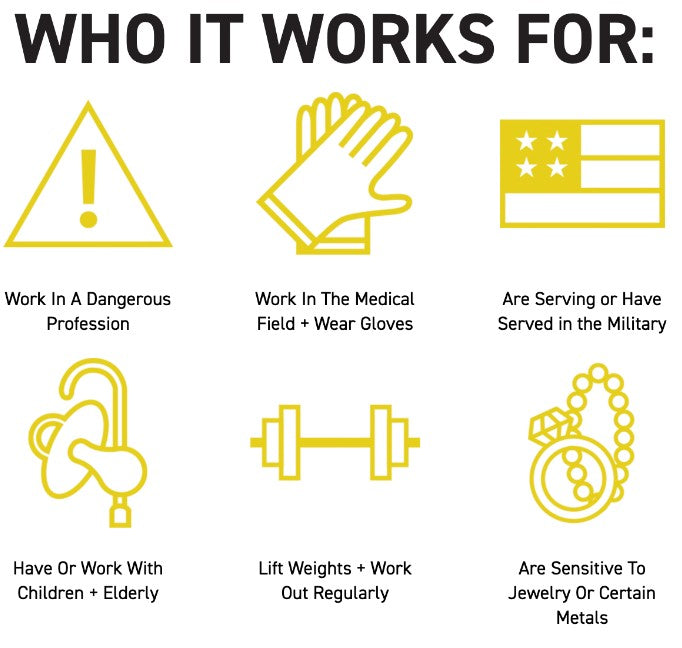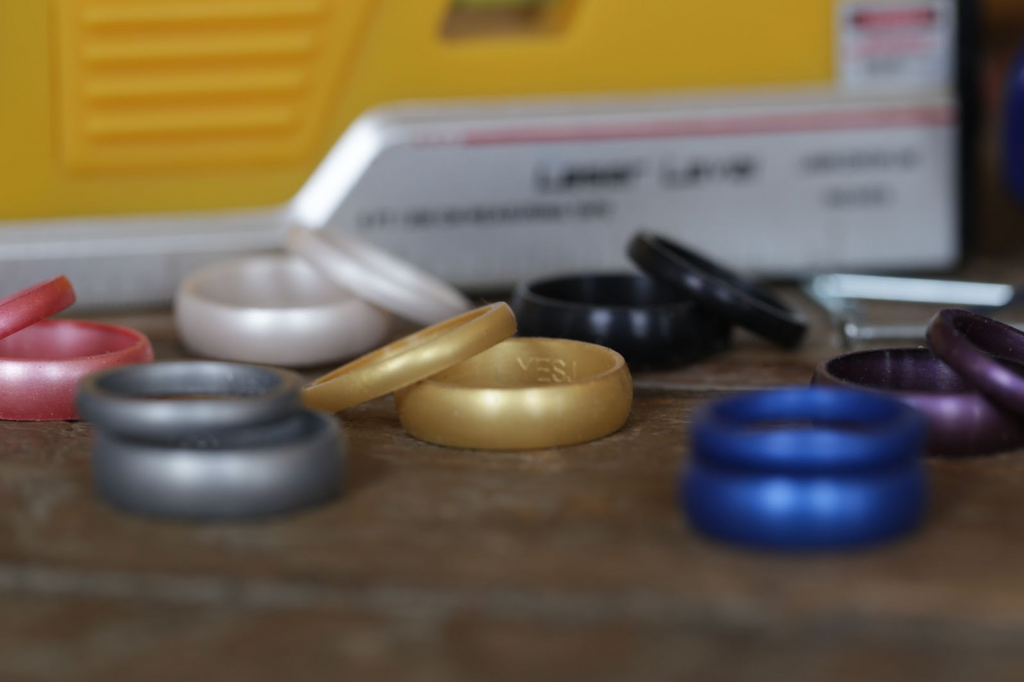5 Common Wedding Ring Injuries and How To Avoid Them
At SafeRingz, we believe you should be able to show your commitment to your spouse without having to worry about your safety. We’ve compiled a list of the top 5 wedding ring injuries. Here's how you avoid them.

We’ve Compiled A List Of The Top 5 Wedding Ring Injuries.
Ring Rash:
One of the most common issues caused by wearing a ring, even SafeRingz, is ring rash, or wedding ring dermatitis. It’s an itch-inducing skin irritation that happens under the ring and is primarily caused by either an allergic reaction to one of the components of the ring (typically nickel), or a reaction to the buildup of soap and water that gets trapped between the ring and the finger. Note: Ring rash is more likely to occur on people who have sensitive skin, eczema, and/or allergies, making those who wear our hypo-allergenic SafeRingz less likely to contract ring rash.
Turning Finger Green:
Even expensive rings can cause this problem - it all depends on what metals the ring is comprised of. The green coloring caused by metal rings is the result of a chemical reaction between the acid in your skin and the metals (usually copper, nickel, or silver) that make up the ring.
Conducting Heat:
If you’re an electrician or a lineman, you’ll need a non-conductive ring. Traditional metal rings are capable of conducting heat and electricity, which can cause serious injuries and accidents.
Getting Stuck from Swelling:
Ever feel like your ring’s a bit more snug in the summer? Chances are, it is. Fingers can swell and change size throughout the year, and even, throughout the day. If you don’t have a ring that stretches, you run the risk of it getting stuck on your finger - an issue that’s neither safe, nor comfortable.
Degloving:
Perhaps the most serious injury that can result from a traditional metal wedding band is degloving, or ring avulsion. If your ring catches on an object and isn’t built to break, you could end up losing your skin, tendons, and nerves, or even, your entire finger.
So What’s The Solution To Avoiding Wedding Ring Injuries?
You guessed it: SafeRingz.
At SafeRingz, we believe you should be able to show your commitment to your spouse without having to worry about your safety. Our built-to-break silicone wedding bands are hypo-allergenic, stretchable, and non-conductive. And that's hardly scratching the surface of SafeRingz' features.
See how families and businesses trust us to keep them safe:
SafeRingz on the Farm
SafeRingz in the Workshop


